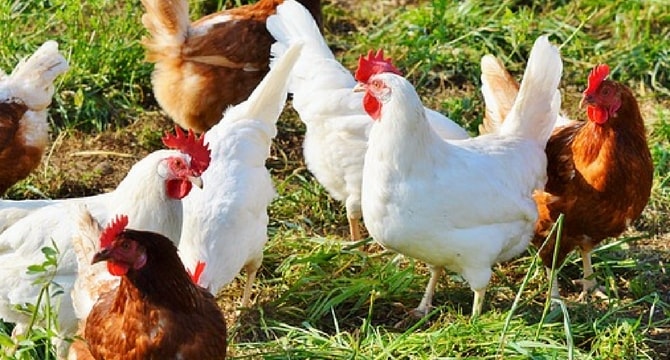

Successful poultry farms should have healthy birds and a good health management program.
If you buy professionally-reared commercial hens at point of lay they may also be vaccinated against several more common diseases, like Infectious Bronchitis (IB). When companies are selling birds in large numbers, it is economically viable for them to buy and administer the relevant vaccines. By contrast, purebred birds will not have been vaccinated as most vaccines only come in 1000 dose vials that must be stored in liquid nitrogen, and used within a short time period, and it’s not worth it for an amateur breeder to do this.
While purchasing new birds for your farm, below are some of the thing s you should look at to have healthy birds:
Bright eyes, Bright red, upright comb, Dry nostrils, Shiny feathers, a good weight (for the breed, this will vary), Clean feathers under the tail, an active, alert manner
Feather quality may vary depending on whether a bird is moulting or not. Feathers missing on the sides of the neck can be due to hen-pecking by birds in crowded conditions, or mites. Broken/ missing feathers on the back of the neck and back of hens can be due to attention from roosters.
However , while choosing chicken , do not choose birds with the following:
That is fluffed up, that has a runny nose, that is standing around / hunched, that has a pale comb, with raised scales on the legs (mites), with dirty feathers around the vent, with lice (brown, raw sugar-sized, fast moving insects on the skin around the vent)*
While scales, lice and parasites are easily treatable, it may be a clue to the breeder’s standards, or it may just be one small negative that you ignore if other aspects of the set-up are good.
How to tell the Hen is laying
Hens that are laying will have bright red combs and wattles, and their vents will be large, pink and moist.
There should be a gap as wide as three upright fingers between their pin bones either side of the vent, and the width of your hand sideways between the pin bones and the bottom of their keel bone, immediately below the vent. Any less than this and they are still maturing.
The easiest way to measure the gap between the pin bones is to tuck a hen under an arm, with her rear end facing forward.
Tip her up slightly, then use your other hand to feel for the pin bones through the skin on either side of the vent. If 20mm (one finger width) apart or less, she’s not laying, 60mm-plus or so, it is laying.
From the point of lay at approximately 18-30 weeks of age (depending on breed), egg production goes up very quickly to peak 6-8 weeks later. It then gradually declines over the next 12 months to about half of what it was at its peak.
 Contact Jaguza Support
Contact Jaguza Support